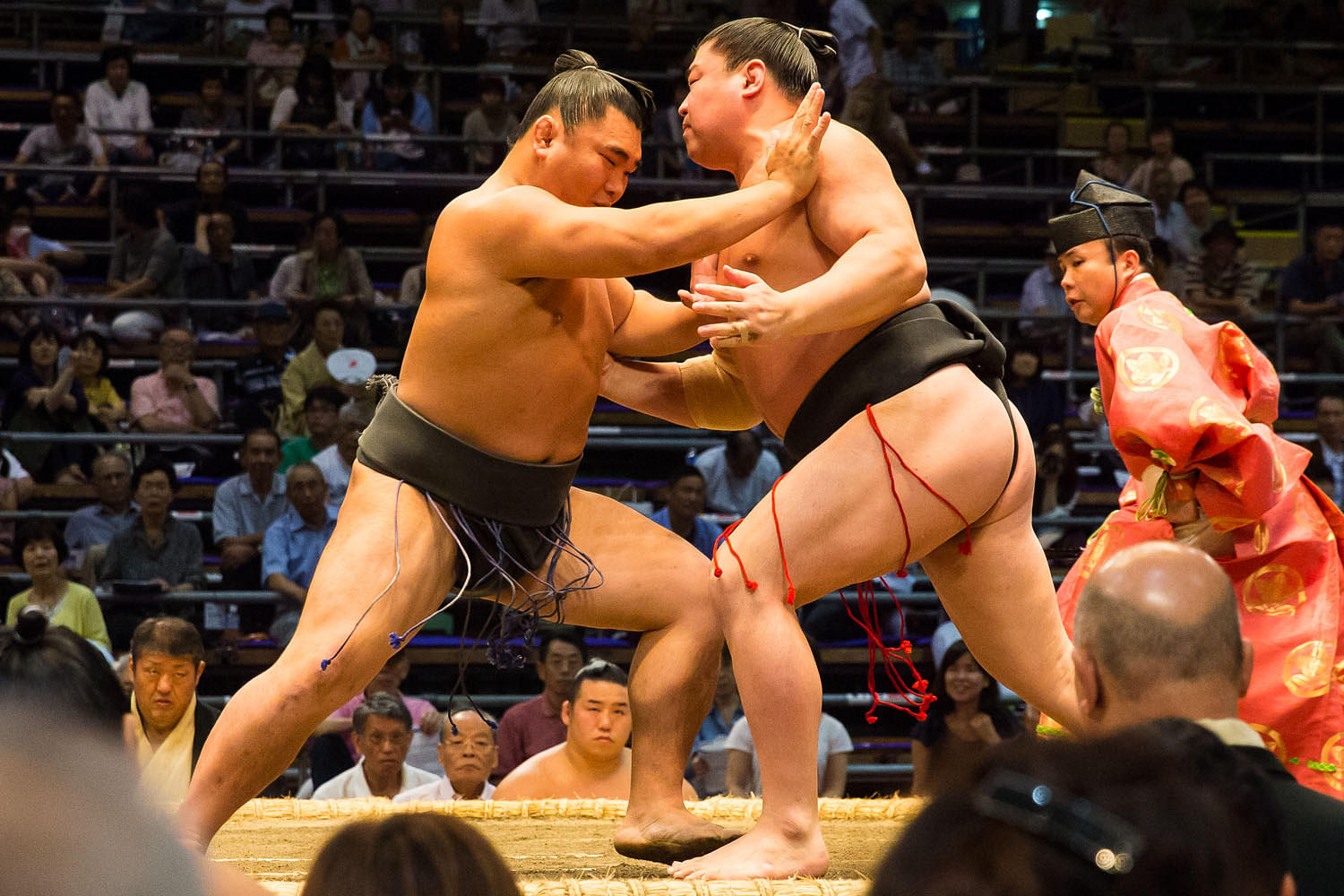Martial arts are a major component of Rio Olympics 2016. Apart from the existing martial arts, Karate is getting added in Japan Olympics 2020. Hence, as a tribute to the land of martial arts, this is an article where we look at the traditional martial arts of Japan and the life lessons they teach us.
Japan is a country with a fascinating culture dating back thousands of years. Sport is a significant part of Japanese culture. Most of the school children join various sport academies. Apart from providing a career option, sport instills certain characteristics such as camaraderie, patience, rule-abiding nature, hard work and dedication that are very much essential in life. Here, we analyse a specific section of sport that is closest to Japanese hearts, the martial arts that were born in Japan and the different life lessons that they impart.
SUMO WRESTLING

Game in Brief:
Sumo is a traditional Japanese combat known throughout the world. The rikishis (as the fighters are known) generally weigh between 100 and 200 kilograms. The fight takes place in a small ring and the fighter can lose through two ways: any part of the body other than sole touching the ground or by moving out of the ring. The rikishis take special attention such as food supplements in order to gain weight, as this makes them more stable and difficult to be pushed out of the ring.
Life Lessons:
- Sumo teaches us not to give too much importance to looks. All these rikishis put on a lot of pounds and are still respected for their skills. Thus, looks may help in the short term but it is only the character and achievements that wins out over time.
- While it looks like these people are highly immobile and their bodies contain nothing but fat, it is a misconception. These people are very nimble due to the exercises they perform every day. Moreover, underneath the fat is a thick tone of muscle that is responsible for their power. Thus, looks can be deceptive.
KENDO

Kendo has kept the tradition of samurai alive
Game in Brief:
Kendo is one of the simplest forms of martial sport. It has kept the traditional samurai spirit alive. The participants try to attack each other with bamboo swords on the head, chest or hand. The protective gear resembles the samurai’s gear.
Life Lessons:
- The main aim of the game is not to defeat your opponent, but also to train the mind. While there is no killing in this game, the attitude is “kill or get killed”. This should be the attitude of a go-getter. There should be no excuses whatsoever.
- People practice Kendo for years together. Unlike other sports where there is retirement at various ages, people practice it until they die. This is akin to saying that perfection is a myth. Have a goal in life, keep trying to achieve it and once achieved, set a higher goal.
JUDO

Judo coaches emphasizes on gripping the opponent loosely
Game in Brief:
Judo is meant as a training for life. It is a relatively a newer mortal combat, as it was created in 1882 only. Its most prominent feature is its competitive element, where the objective is to either throw or take down an opponent to the ground.
Life Lessons:
- The word “Judo” can be translated as “The Way of Softness” or “the Way of Yielding.” It is more about patience and counter attacking than showing strength all the time. Similarly life is about how resilient you are after every difficulty.
- Coaches advice to have a looser grip, contrary to our faith in tougher grip because the looser the grip on opponent is, the better it is for understanding his next move and counter accordingly. Similarly, in life it is important to abandon fear in life and take it as it happens.
KARATE

Karate is predominantly a striking art without any protective gear
Game in Brief:
Karate is a martial art that was developed in Japan. After being practiced historically in China, it returned to Japan in the early 20th century. Karate is now predominantly a striking art using punching, kicking, knee strikes, elbow strikes etc. to deliver blows on the opponent. The competitors of Karate do not wear any protective gear.
Life Lessons:
- In Karate, indecisiveness is viewed as a weakness. It delays the action and prevents the players from going with an ‘all-in’ attitude. This is a weakness not only in karate, but also in real life.
- Karate is more of a self-defence without any weapon and without protective gear. In life problems occur when we least expect it, similar to being without weapon and protective gear. However, it is important not to bow down and face them with courage.
AIKIDO

Aikido is excellent as mental training or as a fitness sport
Game in Brief:
The basic principle of Aikido is “Do not fight force with force”. It is a sport that is not so rough as Judo or Karate. Aikido is excellent as mental training or as a fitness sport, and has become especially popular with women and senior citizens. It is more about redirecting or reflecting the opponents’ energy and momentum towards him.
Life Lessons:
- In this martial art, along with self-defence it equally emphasises on preventing injuries to the attacker. It preaches that revenge doesn’t work and forgiveness is better.
- Aikido training is mental as well as physical, emphasizing the ability to relax the mind and body even under the stress of dangerous situations. Destressing is very important in life and this game rightly preaches it.




